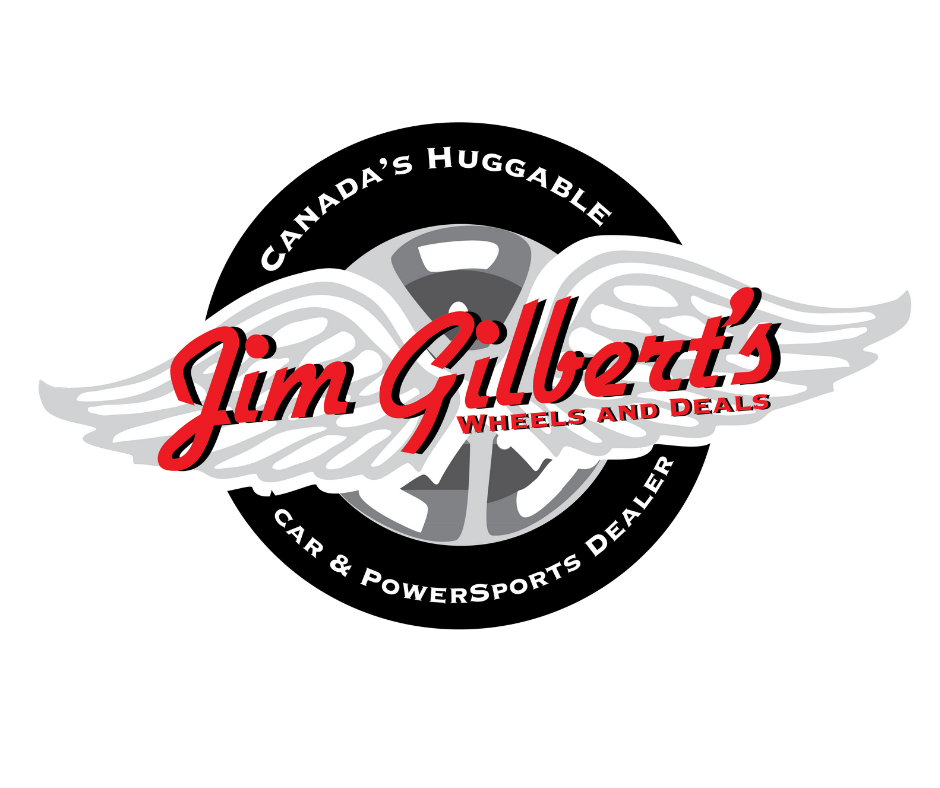2022 Kawasaki Z900RS
Better than a modern sport bike? Maybe!
Complete Walk around Review!
Hey buddy, it's Peter and this one's going to be a good one. Today we get to take a really close look at the Z900RS from Kawasaki. Now we film in Canada, so I'm going to say Z. Obviously it's the Z900RS for the rest of you and to be honest, sometimes I might alternate between those two. Want to give you a real quick shout out to the people that give me access to this bike because it matters to you as a viewer. If you're watching and I don't answer every question that you have, do me a favor, subscribe and ask in the comments whatever questions you have because I work with Jim Gilbert's PowerSports. They allow me full access to their line of vehicles and I get to bring this back on video. If you have questions that need to be answered better on video, I will do that.
:So it's a great sort of partnership we have here. They get to host the bikes and I get to host them for you on video. All right, so let's talk about what we have here. If you look online, Kawasaki spends a whole bunch of time talking about the heritage of the Z1 or the Z1 back in the day and how this is sort of that heritage bike. I'm going to let you read those and watch those videos there. What I want to talk about is what this bike is like to live with, to own, to sit on to... We're going to go over the details, some of the technology, some of the things that make it really great and we'll talk about if that's right for you. So let's start with general styling. Obviously there is still the Z1000. There's still Z models in the Kawasaki lineup, Z models in the Kawasaki lineup and they are all modern styled.
:
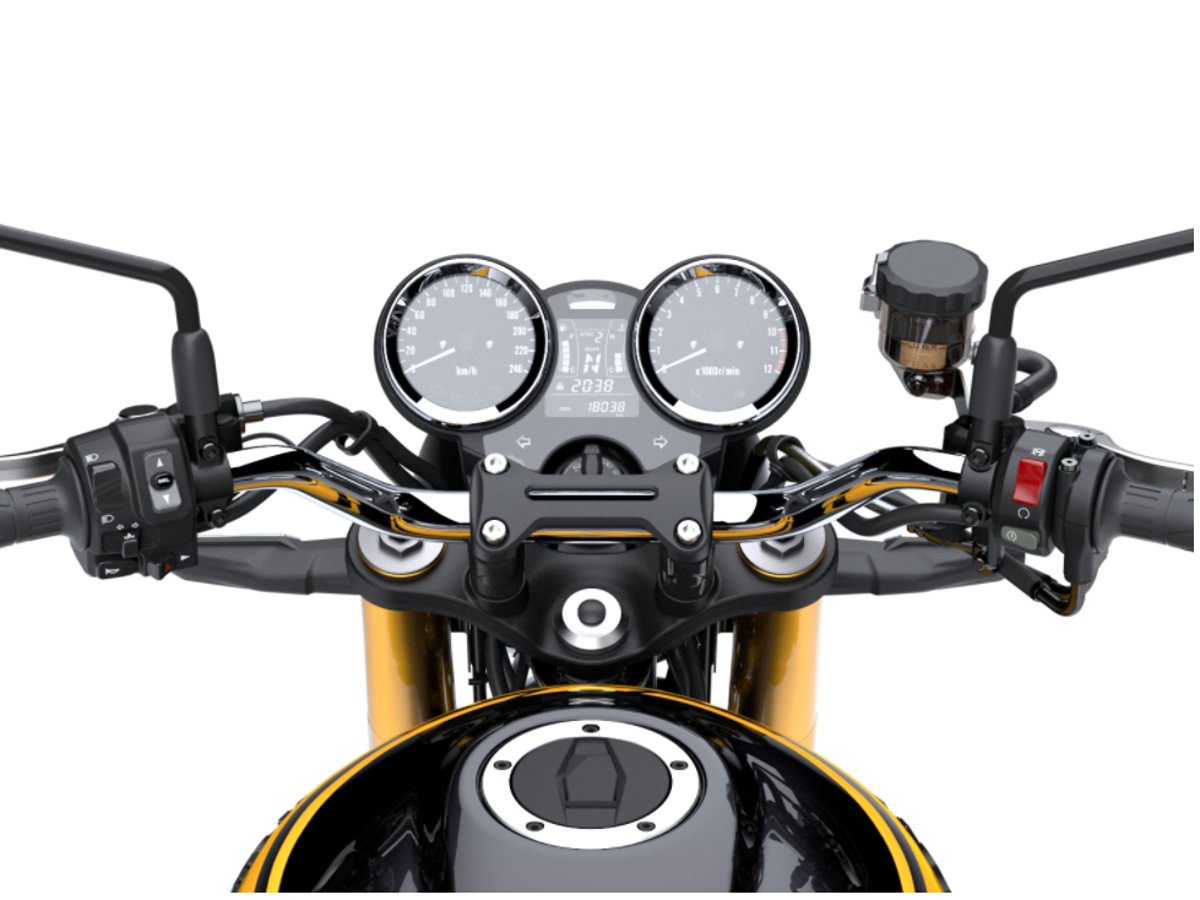
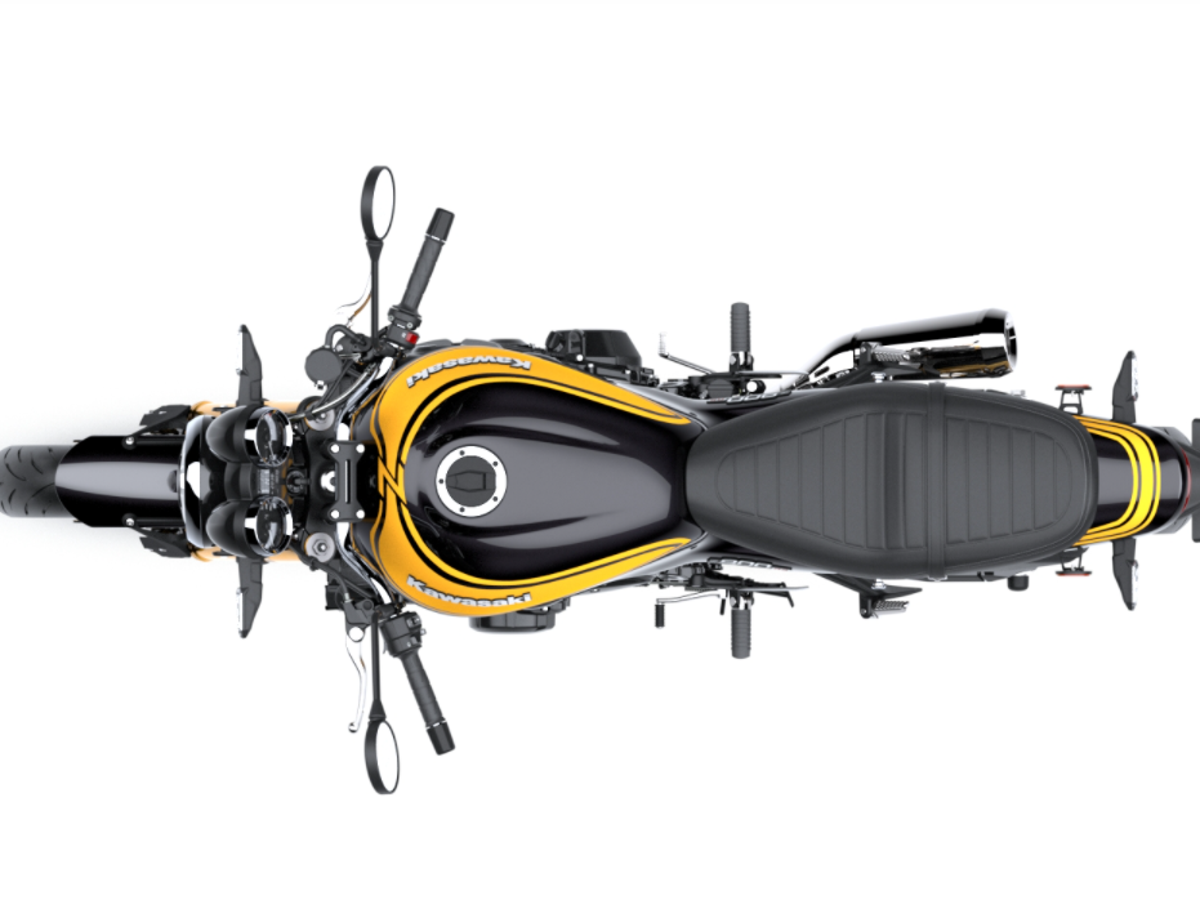
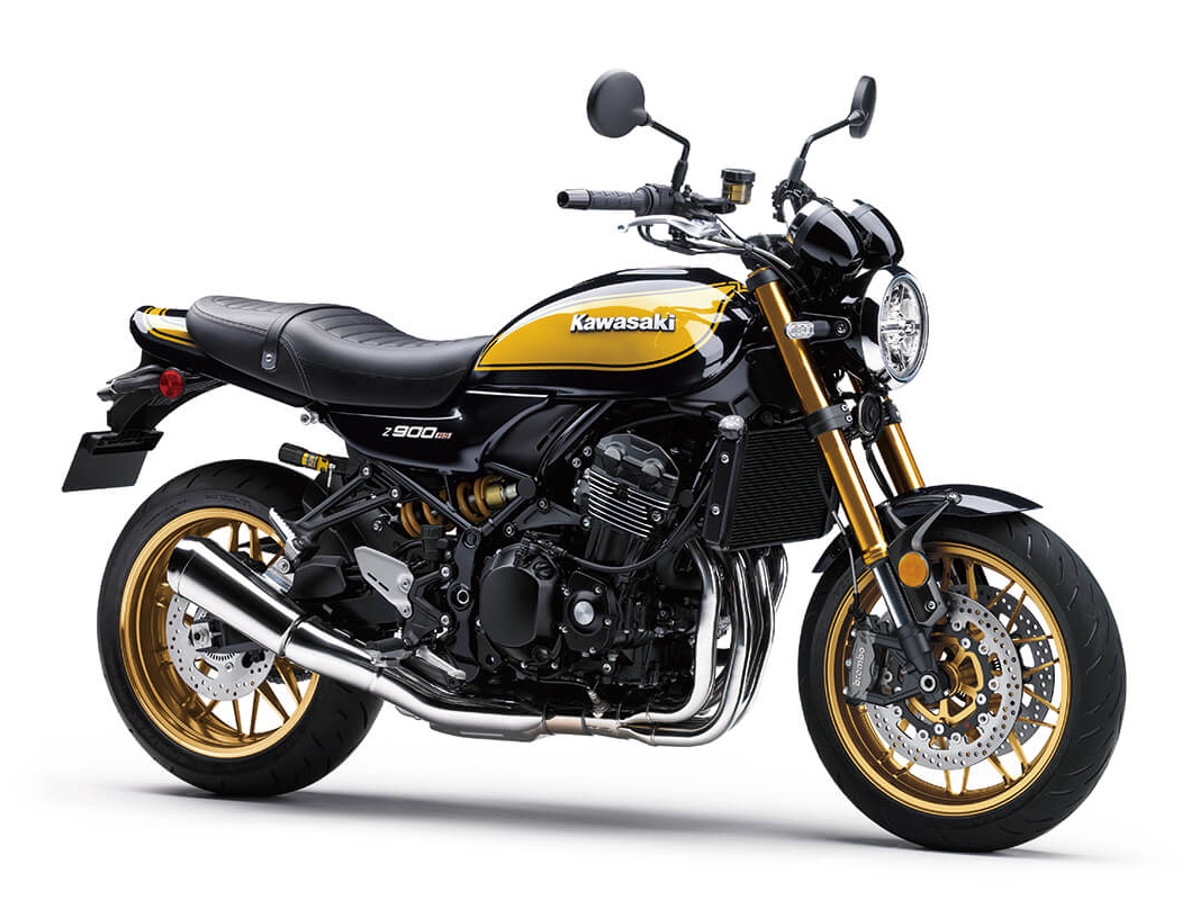
Now this one is tricky because this one is not really modern styling, but it is a thoroughly modern motorcycle. And we're going to go through some of the differences that make it really great as a today bike and a reason why you would want to buy this bike new and not a bike that looks similar to it used. So that's part of what we're going to cover today because there are some real key things that make a difference. But you can see here you've got the traditional style tank. You've got no fairing at all on the naked bike class of today. You still end it with some sort of a fairing out here a little bit. And the general styling is something that is timeless. And to me that really appeals because you're buying modern technology which makes it great to ride but you're buying a style. And let's be honest, a lot of motorcycles about style.
:You're buying a style that's not going to be out of date, out of time. It's going to kind of last forever. Now we did the video of the Z650. That is a two cylinder model with an engine that I really like for the street. It's sort of a good, do everything kind of bike, but this one steps it up. And I always like to compare motorcycles to cars and really to me what this one is maybe similar to something like a Porsche, something like that, maybe a 911, something that's been refined over time with it's thoroughly modern but has a similar look to the past. So kind of that's real, what you're getting here much more higher levels of performance than the two-cylinder 650. This is a four-cylinder inline four powerful engine, but you've got some technology that can keep it in track for you if you're nervous about power in certain situations or if you're just aware of power in certain situations. So let's take a closer look at what we've got right here.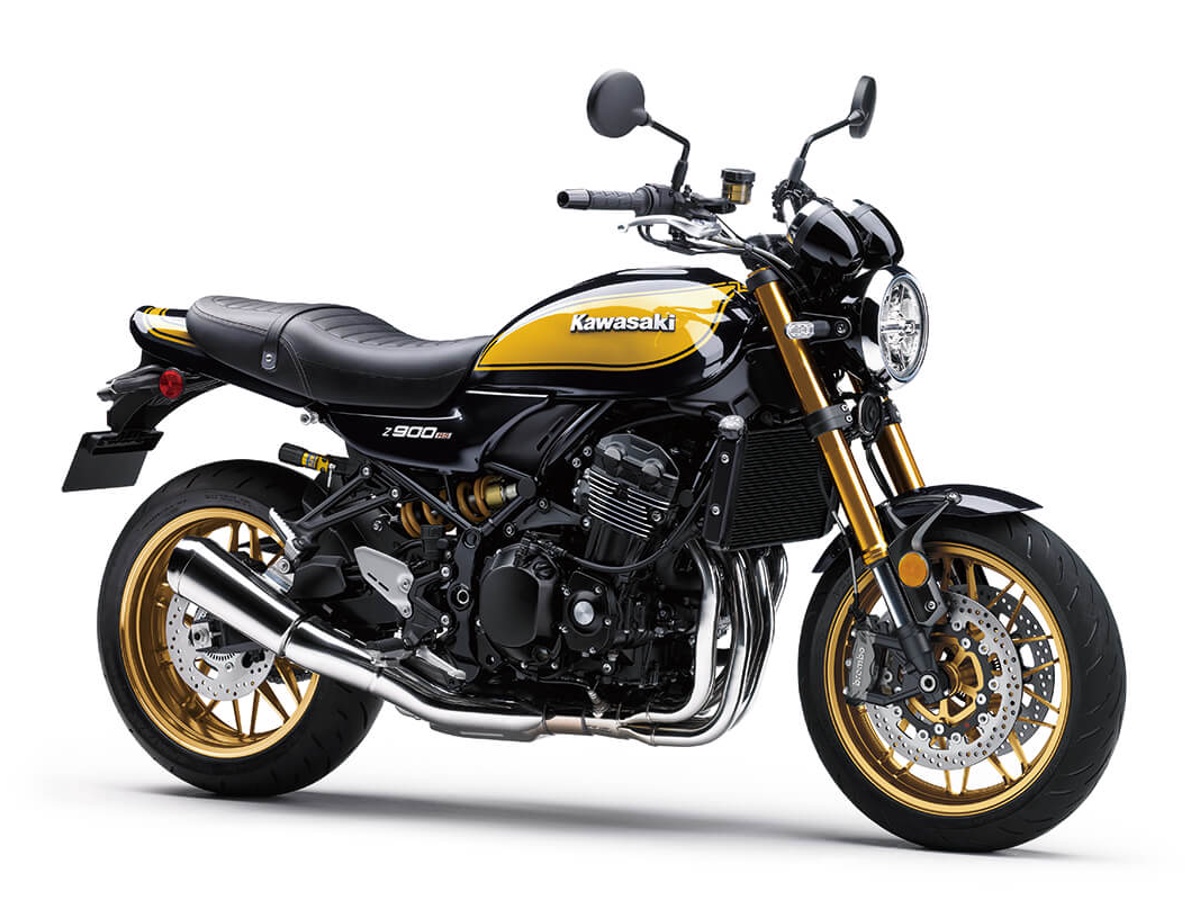

Coming in really closely here, you can see there are some style elements here. Like over here on the side of the engine, Casey, you have fins. Those would've been air cooled back in the day. Those aren't air cooled now. Those are purely for styling. You've got liquid cooling out here which is just going to be nicer for keeping everything the way you want. Engine temperatures the way you want coming through here though, everything's sort of blacked out, kind of traditional styling, nothing too fancy but you do notice a few things. You've got your spring and shock down in here. Now Kawasaki has a name for that. I keep forgetting it, so I'm going to put it on screen right now. But that system there does a whole lot for you. Where the older traditional bikes would've used to have like a couple springs out here or different types of setup here.
:They move this forward, they keep it low, that does a whole bunch of things for sport riding in a whole bunch of things. It's away from the exhaust so you don't overheat the shock. A shock gets overheated, loses performance. So all of that's away from the exhaust which is down here. It's also centralized in the body which keeps center of gravity centralized and low which is what you want. It gives you good amount of travel. This one is fully adjustable. You've got adjustments here. You've got adjustments here. So preload right here, you can really do a lot with that. But it also just makes this bike a sportier ride by putting the mass in the right place and just that general placement with the linkage makes this sportier to ride. You cannot replicate that on an old bike and the way you can here. So you have that modern tucked in look here which gives you that modern sport bike look here.
:The exhaust here, we should talk about that. It is a tuned exhaust. We're going to play it for you later in the video. And they actually take time sound tuning this exhaust which some Kawasaki bikes do and some do not. So if the sound makes a difference to you, this isn't just what happened when they put headers on and the exhaust. This is what happens when you actually tune the exhaust. So you've got the four into one, a big sort of gathering right down here comes out just the right side. This particular bike has the gold wheels. We're going to talk about wheels, tires and brakes right now. Starting out front here you have the Dunlop Sport Maxx tires. These are nice wider tires. That's one thing you're going to notice versus the retro bikes to these. You've got good wide tires, good small sidewall so you've got a good area here to really get leaned over in a corner efficiently.
:Old tires on old bikes, they weren't anywhere near as good as modern tires on modern bikes and not just the rubber compound which you can still sometimes get on older bikes. It's the shaping and the sizing of them which makes this fun to ride. The other thing you're going to notice is what's interesting to me is on some of the lower level Kawasaki bikes, they still use a pedal style rotor which means it kind of comes in and out here on the rotor. We used to talk about that being there to dissipate heat. I've kind of leaned towards, that's just style now, although I'm sure it does dissipate heat. These are Brembo brakes on this model here. The drilled rotors is all you need need to dissipate the heat. You have dual discs out front here. You don't see the ABS ring because it's on the other side here but this does have ABS as well.
:So really quality breaks, you can really hammer on them and really get the results you want. You also have the styling here, the gold rims here. Gold spoke rims here. They have a metallic sort of sparkle to them and they compliment the gold shock tubes, the upside down fork. So overall you've got really modern performance bike pieces all on the front of this that you don't really realize and you can't get on a retro bike. Taking a look at the rear here, one thing you really can't sell on camera is the width of this tire. This is a nice wide tire that you again won't find on the retro style bikes. You still have your ABS brakes back here. Interesting, these ones are not branded Brembo. These are the traditional brakes that you see on most Kawasaki's. So front Brembos only which I don't think makes a huge difference. You've got really good braking front and rear anyways. But yeah, again, those gold color wheels and that really wide tire that makes this stand out as a modern bike.
:
So when we talk about a retro styled, modern bike, I'm the kind of person who wants the retro styling of the dial style gauges here, the old analog gauges. But I don't want to give up some of the modern technology and I think Kawasaki handles that really well here. You don't have the full TFT display that you would see in something like a Ninja 1000 or something like that. But you do have all of the information here in kind of a blacked out kind of display here. So red light up top, the bikes not running, you'll see some engine light and some warning lights down there. Again, we haven't got the engine running right now, but again, some flickering in that display screen just because way it interacts with camera. No flickering in real life, but this is a screen that you can see in all kinds of brightness, all kinds of light. I'm actually filming it in a hard to see environment and of course cameras don't film screens well, but you can see there it is.
:So let's go over just a couple basics here. First of all, you've got a control on the handlebar. We're going to show you in a second here. You can slide through odometer trip A, trip B, kilometers per liter and the average kilometers per liter and the range till empty as well as the outside temperature. Seven degrees right now. I'm getting a little cool for you guys. Back to odometer up there. So that was all along the bottom here. Up top, KTRC, Kawasaki, TR for traction, C for control. You can turn it off, you can set it to level one or set it to level two. With an engine this powerful, that's a really nice feature to have whether it's rainy, whether it's the type of driving you're going through with type of terrain you're going through on the roads of course it's only made for paved roads, you can really dial that out.
:Fuel gauge on left, temperature gauge on the right and a nice big clock in the middle. So you've got all of the modern tech that you need as well as the simple dial gauges. And what I really like about this is when I drive an older bike, I never used to look at the speedometer. I used to just kind of glance down, I was around a 100, I was around 60, I was around a 100 and plus. And again this is kilometers an hour on this bike here in Canada. But I like the way you can just kind of at a glance tell you are you around the speed you want?
:And same thing at a glance you can sort of see where your revs are at. One thing I like is dead center, your gear indicator. Old retro bikes didn't have that. You can tell us, "Yeah, we're supposed to know by where our revs are and everything else." But you know what the reality is? It is really nice to have a gear indicator in there that tells you exactly where you are. Also just little nice touches here. You can see the signal lights there. They sort of grayed out on the bottom, but they're just kind of a nice, clear display there. Older bikes didn't always used to show left and right, so you've got clear indicator there. Let's show you some of the controls left and right. One place I'm really glad that they didn't go retro is right here in the controls.
:So you can't see it here but I can trigger right here a little switch which is my high beam. We're going to show you the headlights on this bike in a little bit here. We've also got your high beam and low beam so you can lock the hive on or you can just flash to pass with your trigger. And then you've got your signal lights, of course everything's there. Horn down here, nice loud horn. And you've got your four-way flashers which again, nice touch you don't see on a retro bike. The only thing they add differently from a retro bike is this select area type thing which again shows you through those trip computer that we showed you earlier. Also, you can hold these down and switch up the control, do that kind of thing, very simple to use. What I like and when I say not retro, these are very modern feeling, they're sure to the touch, they don't feel like they're going to break every time you use them kind of thing which sometimes the retro bikes didn't have that greatest feel.
:So you've got good, simple controls there that does everything you need it to do but they don't feel or look cheapy. Now I'm going to jump on the bike and this matters because this was designed after Kawasaki's early sport bikes. And if you know anything about Kawasaki since the 70s, they've kind of been known for their sport bikes, which really turned into race bikes, which turned into bikes that are a little less comfortable for the everyday rider. But this one, not so much. This one here, I'm about six feet tall. I am easily flat footing even outside of the pegs.
:I can go four of the pegs and easily come. So low enough seat height that you can just easily get comfortable here. Easily control this even if you're much shorter than me. And then again, you can see the seating position here. Very relaxed foot on the brake right here. And I'm upright, there's no weight on my hands really, especially when you get a tiny bit of breeze up against you here and it just feels good to sit on the bike. I'm going to turn the key off so I don't drain the battery so we can show you the exhaust in a second here. But a couple nice little touches here. You've got on the right side here an adjustable brake lever that can be adjustable for reach. So whether you've got big hands or smaller hands, you can reach that, no problem. Left side, slipper and assist clutch. Now a lot of people don't understand the slipper and assist clutch.
:I've done a video on it. Short answer, when it talks about assist, it's actually a lighter pull, makes it on a bigger bike like this, a four-cylinder bike, sometimes you have a little heavy clutch and if you're driving through traffic, a heavy clutch just isn't as fun so lighter pull on the handle. And the assist part of things is if you're driving athletically and sometimes you just mess up that perfect downshift. If that happens here, the slipper clutch allows the clutch to slip a little bit which will work to prevent the tire from slipping just to kind of get it, keep it in grip, that kind of thing. So you can aggressively downshift, you have technology that will work with you to keep you having traction rather than feel that kind of slipping out kind of feel.
:I've done it, if you've driven sporty, we've all done it, that a slipper and assist clutch kind of eliminates that from your riding for the most part. I mean you still have to ride carefully, but it is a really nice feature to have so you'll notice that here. The other thing you'll notice is the traditional style, round [inaudible 00:12:16] up close here. Now, on a modern Kawasaki sport bike, they're way down here on the fairing and that works great if you're in a tuck. But let's face it, this isn't a sport bike where we're going to be really in a tuck. This is something we're going to be riding like this and they're well positioned out from your shoulders. So just a very good overall position, very comfortable. Your legs are good here. You've got the tank there so you can grip onto them. Even though you don't have the carve outs in the tank like you do on modern Kawasaki bikes, it's still a very comfortable position and I should mention the seat as well. Very comfortable seat, nice and plush.
:
It's a firm seat, but it's plush enough to be riding all day, wide enough to be comfortable. And of course, if you're taking a passenger on a sportier bike, you've got a lot of space here. Sure you've got the grab handle there, but they're going to hold onto you probably and it just makes it a nicer, more comfortable sport riding experience and that's kind of the benefit of these retro bikes. Modern sport bikes, gearing towards sport means you make some sacrifices.
:This one still very sporty ride. It's not going to be a race track bike, although you could certainly take it to the track but it allows you to be comfortable while sport riding and that really appeals to me. All right, so I've turned the bike on and compared to some Kawasaki bikes and certainly compared to the Piaggio and Vespa scooters that I also review here, this has some noise. It sounds like a motorcycle. Now I'm raising my voice a little bit. I have the microphone up here so you can't really tell the difference. What I will do though is I'll take the microphone off here and I'll rev it for you with the mic down here.
:And you can see that has a real Kawasaki sound to it. That's sound tuning, again, this isn't the perfect way to pick up a sound from a motorcycle but it absolutely has an energetic, melodical, musical kind of note. It hits the right notes. And again, does that pick up on the microphone that I have? Probably not but it sounds fun. It's not overly obtrusive, but you do hear it. You do experience it. It makes it a lot of fun to ride. All right, we're going to keep the bike running because the headlight is only really on when it's running. So I'm going to show you that flash to pass here. Just flash my trigger here and I can see that flash to pass. It probably won't show really bright in the camera there, but it is just nice to have. So you do have an LED light here.
:Low beams are on now, high beams are on there. You can lock the high beams on like that. One thing that's interesting to me is I'm not sure if this is a cost decision or a styling decision, but as I turn on my four-way flashers, you may or may not notice that these are not LED lights. They are just incandescent lights which to me I like LED lights on a modern bike but at same token, does that give it that retro kind of feel with them coming on? They're still very bright, very easy to see. They don't film very well, so don't worry if they don't look great on video. But it was an interesting thing to me. They're making style decisions across this bike and sometimes they're modern things with the LED signal lights in this case, they don't go with LED signal lights front or rear.
:They do go with an LED headlight and I think that's where you want it and the signals, we can debate that in the comments section. Before we wrap up this video, I want to show you one little piece of this bike that makes it surprisingly practical and I think it's something that people leave out here. You can sort of see behind the reflector here is a little hook down here and you have the hook over here. Of course you can use the foot peg as well. You can very easily take a tank or take a tail bag on here instead of a tank bag. And with a bike with a paint job like this, which we're going to show you in a second here, I think it really makes sense to throw a tail bag on here to have the ability to take some extra stuff with you, just like you used to. You used to take it sort of back here, you didn't have the fancy, magnetic tank bags and other things in the past.
:So you used to take your luggage off on the back seat. And again, with the hooks there, you can kind of bungee and secure and strap down various things. So it becomes a practical bike as well where you can take some of the things that you need to take along with you. I talked about showing you the paint color and I'm really struggling to actually film it here. The camera's doing some adjusting here. You can see there's a real nice metallic in that black area and the metallic continues into the gold area here, which is a little harder to film. That camera's really kind of correcting itself there. But you can see top left of the screen there that gold still has a metallic. And that's one thing you're going to find with Kawasaki bikes.
:
When it comes to the paint job, Kawasaki is just really good with their paints. It's just really nice that metallic really is sort of a deep metallic and it's just not something that a lot of people expect that makes the bike really feel like quality. So let's wrap up. Who is this bike for? Well, the styling is one thing. If you just want it for the styling, obviously it's for you. But I think one thought, one segment of the population that maybe missing out on this bike that should really consider it is the people that want a sportier bike, but a comfortable bike. Something with this kind of styling doesn't just change the look of the bike, it changes the way you interact with it, from the way you sit on it, the way your passenger sits on it, the seating position, the upright riding position, but still having the sporting ability, I really think this thing appeals to a sport bike crowd that wants a really comfortable sport bike.
:And then again, that timeless design. This doesn't seem so retro that it's out of date, you've still got all the modern pieces. Having the traction control I think really matters. ABS breaks, those kind of things and there's a whole bunch of other technologies in here as well. So I think it really appeals to a far wider range of riders than maybe the average person would think. Even somebody like a Harley rider who could never ride a Kawasaki sport bike because that would just change their image. I think this is a bike where they could get on and justify, "Hey, this thing has some history, it has some legendary capabilities from the past, but you're on a fully modern, fun to drive bike even though the size of it is lightweight to go through turns and it's completely usable, yet comfortable, yet stylish and timeless."
:So, if I didn't answer your question, let me know in the comments below if you want to talk about this a little bit, some more. If you want to see things in the video in the future, do me a favor guys we trying to build the channel out. Hit the subscribe button, like the video. And again, if you want to see this in person, swing by Jim Gilbert's PowerSports. They are an amazing dealer. Just a few years ago they took on the Kawasaki lineup and they've become the number one volume Kawasaki dealer in the country. They have the full Kawasaki lineup and they are an absolute destination store. So make sure you swing by Jim Gilberts PowerSports Fredericton, New Brunswick, and we'll talk to you in the next one. Thanks.
Full Helpful Financing available... and our specialty